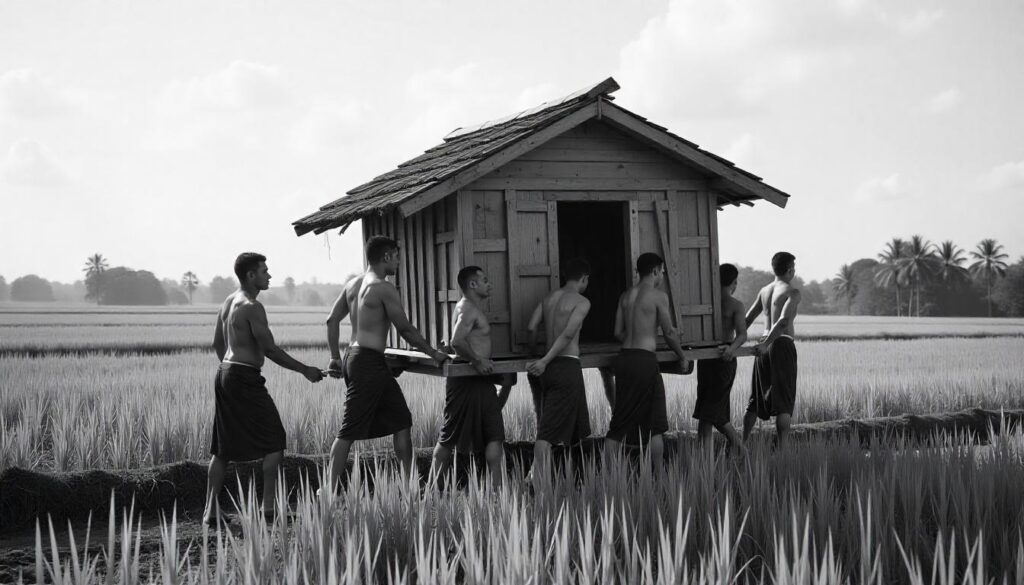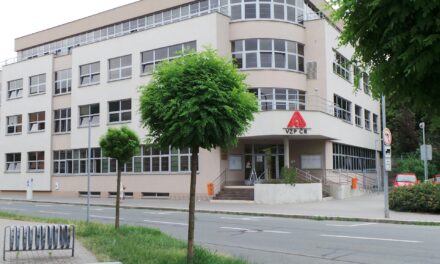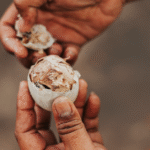
By: Ma. Cristina Paule-Mercado, Ph.D.
Dr. Ma. Cristina Paule-Mercado is an Associate Scientist at the Institute of Hydrobiology, Biology Centre of the Czech Academy of Sciences. Her research focuses on aquatic ecosystems, with particular emphasis on the application of machine learning, numerical modeling, and computer simulations of hydrodynamics and water quality in lakes and reservoirs. Based in České Budějovice, she actively contributes to both local and international collaborations aimed at advancing freshwater sustainability and ecological resilience. In addition to her scientific work, she is also active in volunteering for the Filipino community in České Budějovice and serves as a Filipino community representative at the Centrum na podporu integrace cizinců (CPIC) for the South Bohemian Region.
Prague, Czechia – Bayanihan, derived from the Tagalog word bayan meaning town or nation, is a deeply rooted Filipino value that began as neighbors helping a family move their bahay kubo (nipa hut). Seen historically as an act of bayani (heroism), Bayanihan represents Filipino culture’s strong community bonds, shared responsibility, and care (Ang 1979). Today, it is called damayan or mutual aid, tulungan or cooperative reciprocity, and “usungan” or community development. For instance, helping during harvests, community clean-ups, childcare, fundraising, disaster response, community pantries and mutual aid groups show its continued relevance (Adlit & Martinez, 2023). Whether through physical labor, emotional support, or resource sharing, Bayanihan reflects working together for the common good.
Bayanihan also embodies Filipino values like utang na loob (debt of gratitude), pakikisama (social harmony), and pakikipagkapwa (shared identity), fostering belonging and interdependence. These values encourage prosocial behaviors rooted in empathy and cultural teachings (Ang 1979).

Socially, Bayanihan is distinct from formal volunteering, which is organized by institutions with roles and accountability. Instead, Bayanihan is informal and spontaneous, arising naturally within communities and guided by shared values rather than formal leadership (Adlit & Martinez, 2023). It is a grassroots expression of Filipino identity shaped by history and social norms.
Sociologically, Bayanihan shows how communities mobilize effectively toward common goals, often compensating for gaps in government services (Jadina, 2021). From a systems perspective, Bayanihan acts as a self-organizing system without centralized control (Adlit & Martinez, 2023; Jadina, 2021), responding quickly during disasters like typhoons and the COVID-19 pandemic. Its modern forms enhance resilience and sustainable development, especially where formal support is limited (Villar & Magnawa, 2022).
Bayanihan influences policymaking in disaster risk reduction, social services, and environmental protection by encouraging community participation and local ownership in initiatives like tree planting and climate adaptation (Baybay, 2020). Grounding programs in local values strengthens public acceptance and inclusivity.
Globally, Bayanihan extends through overseas Filipino workers (OFWs), who maintain mutual aid networks and cultural ties worldwide, supporting migrant communities and preserving Filipino identity (Adlit & Martinez, 2023; Jadina, 2021). While mutual aid exists in many cultures, Bayanihan stands out for its deep cultural symbolism and integration into everyday social norms. For instance, during Kousek Země—an annual cultural exchange event in České Budějovice organized by a local charity—informal, community-driven cooperation like Bayanihan is seldom seen. European societies often emphasize individualism and structured volunteering through institutions. In Siberian communities have similar spontaneous cooperation, but generally lack the deep cultural symbolism and embedded social norms that characterize Bayanihan. This contrast highlights the distinctiveness of Filipino community values and the strength of their spontaneous cooperation networks.
Despite its strengths, Bayanihan has limitations. Overreliance on community self-help can mask deficiencies in public services, reducing pressure on governments to provide healthcare, infrastructure, and social safety nets (Adlit & Martinez, 2023; Jadina, 2021). Additionally, the emphasis on pakikisama (social harmony) may silence marginalized voices and impede justice efforts (Ang 1979). These challenges call for integrating Bayanihan thoughtfully with formal systems to ensure equity and inclusion.
To sustain the Bayanihan, nurturing its core values—empathy, community identity, and shared responsibility—is vital through education, cultural transmission, and supportive policies. Promoting inclusivity and transparency helps address power imbalances. Local leaders and governments play a key role in integrating Bayanihan with formal disaster response and social programs. With Filipino culture’s collectivism and solidarity, Bayanihan is well positioned to adapt and thrive amid social change.
Ultimately, Bayanihan remains a vital force for humanitarian and environmental action. It inspires empathy, cooperation, and collective responsibility, motivating efforts like river cleanups, tree planting, and community farming. It supports disaster preparedness, aids vulnerable groups, and fosters unity across diverse communities. Integrated into education, governance, and international cooperation, Bayanihan preserves Filipino heritage and offers a universal model for inclusive, compassionate, and sustainable societies (Baybay, 2020; Jadina, 2021; Villar & Magnawa, 2022).
In summary, Bayanihan began as a simple tradition but has evolved into a cultural cornerstone defining Filipino community life. It symbolizes Filipino identity and illustrates prosocial behavior, collective action, and resilience. While not a substitute for formal institutions, Bayanihan complements them by mobilizing compassion and cooperation. In today’s complex social and environmental landscape, Bayanihan offers a hopeful path toward more inclusive, supportive, and sustainable futures.
Ma. Cristina Paule Mercado
References
Adlit, M. F., & Martinez, M. R. (2023). Reliving the Bayanihan Spirit: SPRCNHS Landayan Annex Narratives in the New Normal. Puissant, 4, 781–800. https://www.ssoar.info/ssoar/handle/document/83683
Ang, G. R. 1979. “The bayanihan spirit: dead or alive?” Philippine Quarterly of Culture and Society 7 (1/2): 91-93.
Baybay, C. S. Q. (2020). Effective Community Engagement Approaches for Climate Change Adaptation in the Philippines. https://doi.org/10.25904/1912/67
Jadina, M. (2021). Reacquiring Bayanihan: A community-level analysis of land reform in Leyte, Philippines : A thesis submitted in partial fulfilment of the requirements for the Degree of Doctor of Philosophy at Lincoln University. https://hdl.handle.net/10182/15098.
Villar, E. B., & Magnawa, J. P. (2022). Surveillance and pandemic governance in least-ideal contexts: The Philippine case. Journal of Contingencies and Crisis Management, 30(1), 22–31. https://doi.org/10.1111/1468-5973.12394;










